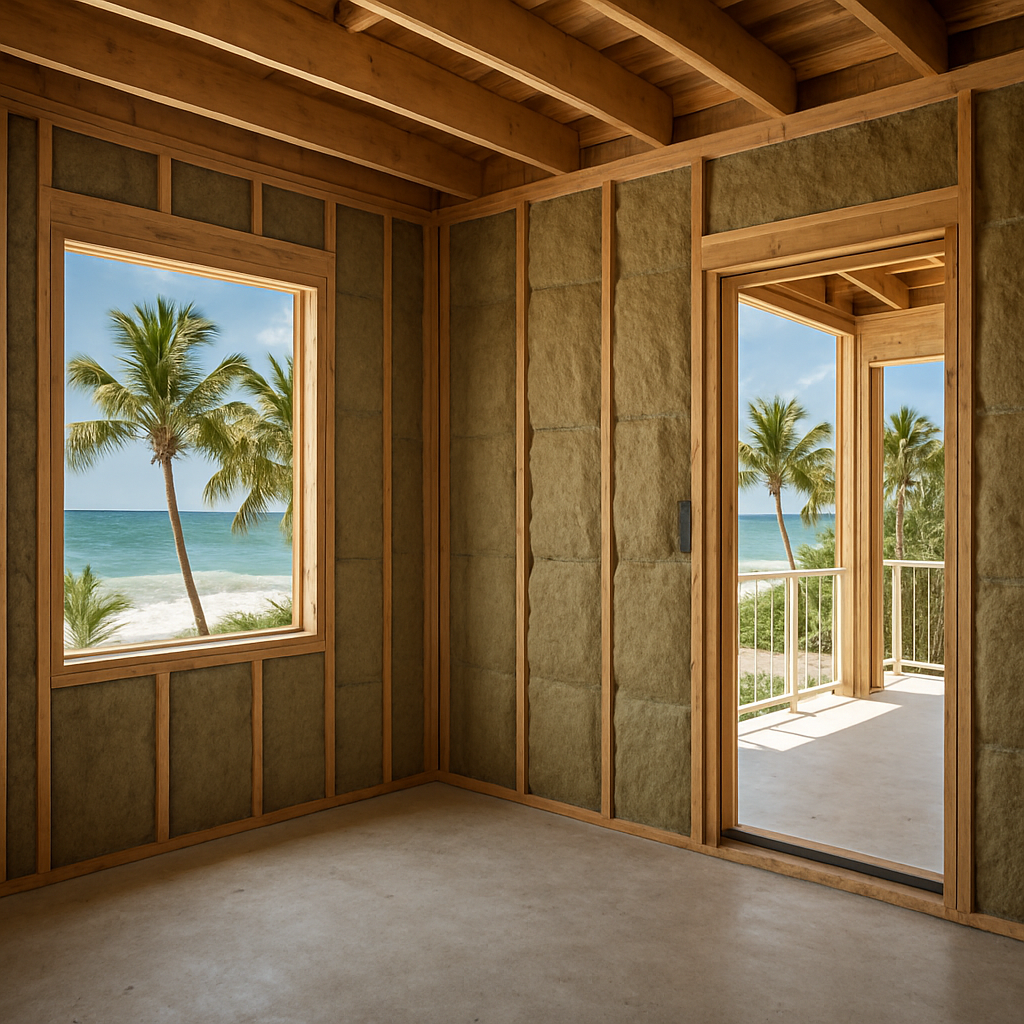
Designing for Durability: A Builder's Guide to Preventing Mold with Insulation
For a luxury home builder, your reputation is built on the long-term performance of your projects. One of the most insidious threats to that reputation is moisture. A hidden leak or trapped condensation can lead to mold, rot, and catastrophic structural failure, resulting in costly litigation and irreparable brand damage.
Proactive moisture management is not a feature; it is a fundamental principle of resilient construction. Your choice of insulation plays a pivotal role in this system. This guide provides a technical framework for using insulation not just for thermal control, but as a key tool in preventing moisture-related construction defects.
This article is part of our deep dive into high-performance building science. For a comprehensive overview of creating a complete, engineered insulation system, we recommend reading our main guide, The High-Performance Hybrid Model: Engineering Luxury Homes with Spray Foam and Mineral Wool.
The Physics of Moisture: Understanding the Threat
Moisture can enter a wall assembly in two primary ways:
- Bulk Water Leakage: This is a physical leak from the exterior (e.g., failed flashing) or interior (e.g., a plumbing leak).
- Vapor Diffusion & Condensation: Water vapor in the air can migrate through building materials. If it hits a cold surface (the dew point), it can condense into liquid water within the wall cavity.
An effective insulation strategy must account for both threats.
Material Matters: A Tale of Two Philosophies
When it comes to insulation and moisture, there are two primary approaches: create an impermeable barrier or create a breathable, resilient assembly.
The Barrier Approach: Closed-Cell Spray Foam
Closed-cell spray foam acts as a vapor barrier, preventing water vapor from passing through it. While this can be effective, it carries a significant risk. If bulk water finds its way into the wall cavity around the foam (e.g., a leak at a window sill), the impermeable nature of the foam can trap that moisture. This creates a hidden, perpetually wet environment that is a perfect breeding ground for mold and rot.
The Resilient Approach: Mineral Wool
Mineral wool insulation embodies a more resilient, "belt-and-suspenders" philosophy. It is designed to manage water in a way that protects the structure even if the primary water-resistive barriers are breached.
- Hydrophobic Properties: Mineral wool is made from stone and naturally repels water. If a pipe leaks, the water will drain down and out of the wall cavity instead of being absorbed and held against the framing.
- Vapor Permeability: It is "breathable," meaning water vapor can pass through it. This allows the wall assembly to dry out completely if it ever gets wet, from either an interior or exterior source.
The Verdict for Luxury Construction: Resilience Over Resistance
For a luxury home designed to last a century, the resilient approach is unequivocally superior. You must assume that at some point in the building's life, water will get into a wall. The critical question is whether your wall assembly is designed to handle it.
By using mineral wool, you are building in a layer of redundancy. You are creating a durable, breathable wall system that actively resists mold and will not rot. This is the ultimate form of risk management, protecting your client's investment and your professional reputation.
Conclusion: Build for Durability, Build with Confidence
Choosing the right insulation is one of the most critical decisions in mitigating the long-term risk of moisture damage. By standardizing with a hydrophobic and vapor-permeable material like mineral wool, you are moving beyond simple code compliance and embracing the principles of resilient, durable design. This commitment to building science is a hallmark of a true luxury builder.
.png?width=250&height=177&name=Untitled%20(1).png)

